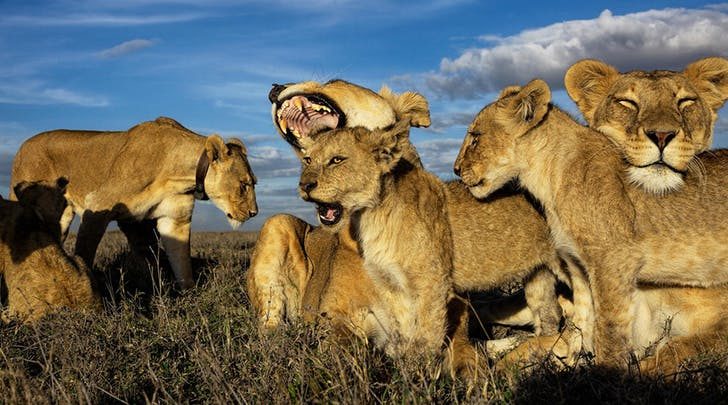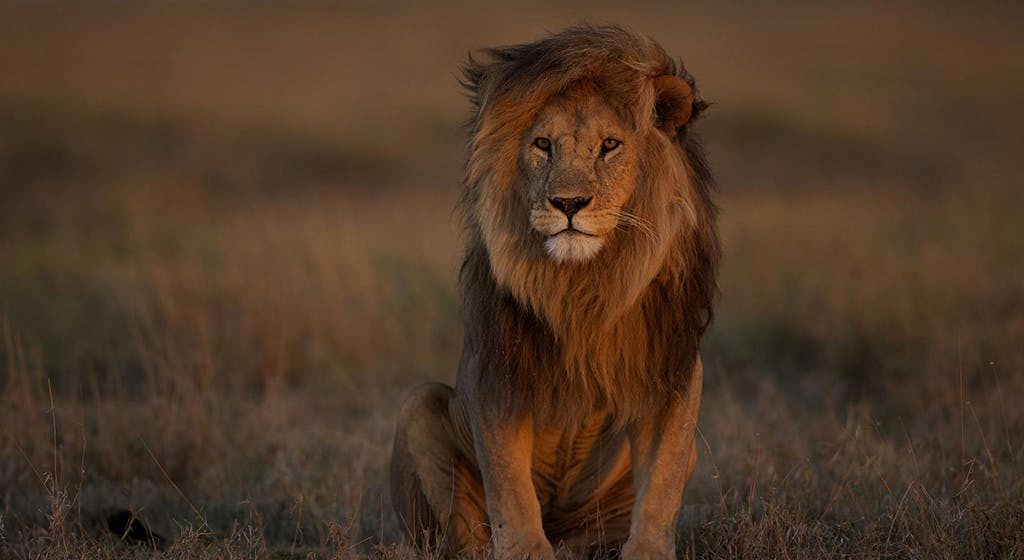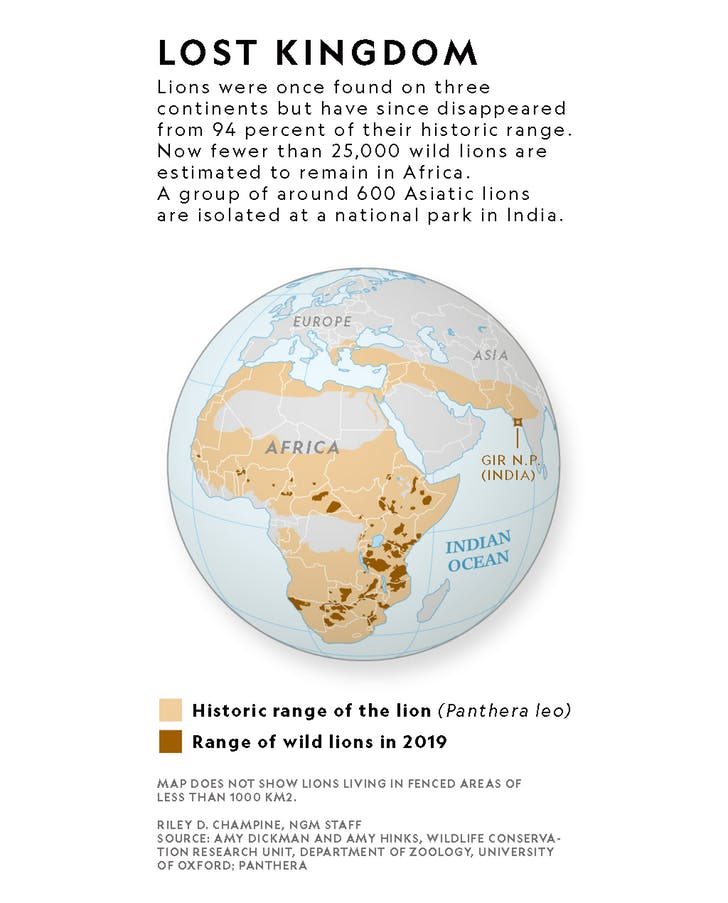There are half as many African lions than there were 25 years ago. Conservation programs aim to protect the disappearing species by promoting human-lion cohabitation across the African savanna.
For every lion in the wild, there are 14 African elephants, and there are 15 Western lowland gorillas. There are more rhinos than lions, too.
The iconic species has disappeared from 94 percent of its historic range, which once included almost the entire African continent but is now limited to less than 1.71 million square kilometres. With fewer than an estimated 25,000 in Africa, lions are listed as vulnerable to extinction by the International Union for the Conservation of Nature, which determines the conservation status of species.
To put things in perspective, the nonprofit
Wildlife Conservation Network (WCN) notes that lion numbers have dropped by half since
The Lion King premiered in theaters in 1994. (The Walt Disney Company is majority owner of National Geographic Partners.)
"Lions are truly one of the world's universal icons, and they are quietly slipping away," says Paul Thomson, director of conservation programs for WCN. "Now is the time to stop the loss and bring lions back to landscapes across the continent."
To save the iconic African prides, conservationists are working toward driving down the costs related to living beside them and highlighting the local value that exists in protecting them.

Lions are the only cats that live in groups, which are dominated by females.
Africa's revered predators face myriad threats that put their very existence at risk. The decrease in lions' wild prey for the bushmeat trade forces lions into dangerous contact with humans and their livestock in search of food. But if the cats prey on cattle, they may be killed in retaliation—often by poison. And as human settlements grow, lions lose their habitat and see it fragmented, making it difficult for males to find new prides and mate.
Poaching, too, poses a threat. Skin, teeth, paws, and claws are used in traditional rituals and medicine, and there's a growing market for lion parts in Asia as well.Conservationists hope to halt the decline of the fragile species by supporting the coexistence of lions and humans across Africa. Part of the solution is offsetting the financial burden required to manage the protected areas, which are the backbone of conservation, as well as protecting lions in unprotected areas, says Amy Dickman, a
National Geographic grantee and research fellow at the Oxford Wildlife Conservation Research Unit (WildCRU) and the co-author of a 2019 report called "State of the Lion."
"If we want lions to exist in 50 years from now in any meaningful way, we need to adjust the costs and benefits so that far more of the benefits accrue at the local level and the costs are borne at the international level," Dickman says.
(Read more
here)



Reader Comments